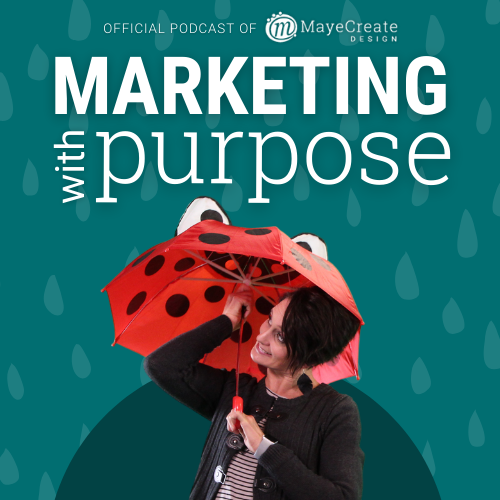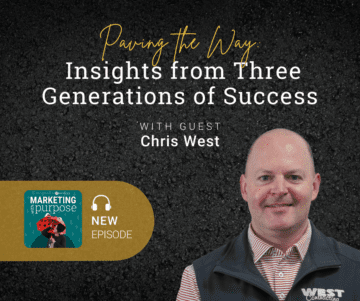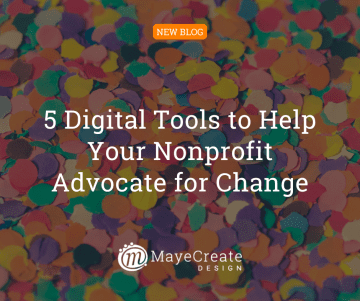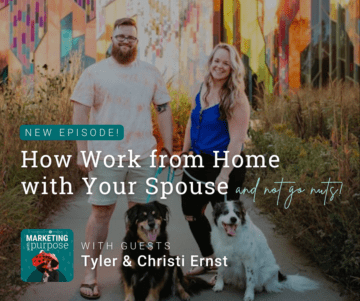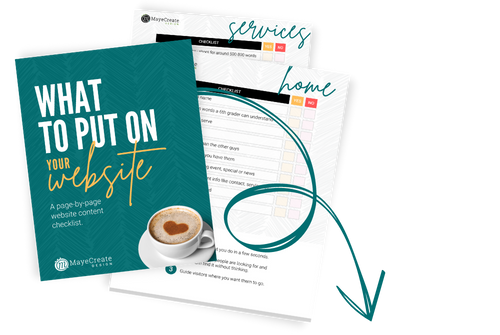How the Coronavirus Impacts Marketing
April 10, 2020

CONSUME CREATIVELY
This content is available in:
This content is available in:
AUDIO
TEXT
Table of Contents: Type by Type Breakdown and Forecasting
- Online Marketing
- Websites & Blogs will see a traffic increase.
- Invest in your future: Do some website housekeeping and blogging.
- The time for social is now.
- Social ads are a steal.
- To see “results” now, run like campaigns.
- Stay the course with your email marketing.
- Audience for display ads will be huge.
- Review the data before turning off your Google Search Ads.
I knew that this whole coronavirus thing was going to make its way around and start touching us all in some way eventually. And literally, not figuratively, while I was planning a podcast over this topic, one of our clients called in and told us they were going to have to pause their services. It’s not quite irony, but it feels a lot like it. What kind of karma is that?
So today, I’ll project what I think is going to happen in marketing as a result of this pandemic. I know a lot of companies are going to hunker down and put marketing in the closet. Maybe I can be your voice of reason. I’ll explain where you can put your marketing money right now to keep moving forward with your marketing. But if you’re only in need of the big picture on this article, here it is:
IF YOU STOP ALL YOUR MARKETING RIGHT NOW, YOU WON’T HAVE LEADS WHEN YOU NEED THEM.
So, if that’s all you wanted, you can stop reading now. Want to know why I’m writing in all caps? Read on!

For some mediums, the time to promote and grow your business is now.
You have a more captive audience than ever because people aren’t wandering all over the place — they’re stuck. They’re going online and searching for answers. As of March 16th, this hand sanitizer video went from 50 views to 1,200 views per hour on YouTube.
In this moment of uncertainty, people are putting off making decisions. Socialbakers reports click-through rates on ads are down on social platforms. While people aren’t pulling the trigger right now, they’re still having the same problems they’ve always had. They’re still considering their big purchases.
If your product isn’t something people NEED at this very moment, focus your messaging on building awareness.
When people are camping in the early phases of the buying cycle, we need to lean into education and relationship building. Focus on building awareness, like building marketing karma. That awareness will build your audience so you can talk to them when they’re ready to buy. Think of it as building up your next generation of leads.
We need buyers to remember us when they’re ready to make a decision. As they’re considering solutions to their challenges, it’s our opportunity to present our products and solutions as the answer. That way, when they get ready to make a buying decision, they think of us as a solution. Like branding with an inbound twist.
Type by Type Breakdown and Forecasting
Without further ado, let’s examine mass marketing, event marketing and online marketing and break down what might be impacting the effectiveness of each medium, and what we might expect out of them.
I’ll probably question a lot of things because I certainly don’t have all the answers right now. I’m a researcher at heart, and as much as I’m freaking out as a business owner right now, I am equally as excited as a researcher and a scientist to watch how it all unfolds. I’m going to be data drunk for months.
Mass Marketing
Big takeaway: Mass marketing will take a hit — it has its ups and downs.
I consider traditional marketing mediums like television, radio, direct mail, print ads, billboards… all those marketing things that have been around for a really, really long time.
Television is a go.
I feel like television is going to be a decent place to leave your money. Nielsen, a market-research firm, reported television use went up by 18% in the week ending March 22nd, compared with the week before. Without the sporting events, things shift a little bit. Advertising revenue will certainly drop, especially since they postponed the Olympics (I heard they’re still going to call it the 2020 Olympics in 2021…I’m not sure how I feel about that). Magna, a major media buyer, projects television ad revenue will drop by 13%.
The only television bright spot this month, according to my husband, is the golf match: Tiger & Brady vs. Phil and Payten Manning. But, let’s be real — even without the sporting events, the sheer number of people watching will be crazy, right? So based on that, I think TV advertising makes sense.
Radio is iffy.
This is a tough one. I love public radio so much, especially talk and sports radio. I just don’t know how much radio people consume as they’re going about their day-to-day lives in their homes. I will be interested to see how radio consumption changes with people not driving as much — not as many road trips and limited work commutes.
What’s truly crappy is radio was primed to have an amazing year. In February 2020, the Radio Advertising Bureau reported local radio stations’ revenues grew 25% in 2019 and were forecast to grow 29% in 2020. I guess the real question is, what will businesses do as cash flow tightens? Will they strike a deal with their radio marketer or just turn it off? I say try to strike a deal first. I think people continue listening to the radio.
People find value in radio programs because they give you so much information. And they trust the people whose voices they hear day after day. Neilson says, “Radio is comfort food,” after finding 83% of consumers say they’re listening to as much or more radio as they were before the pandemic. It seems like people will hold on to their radio rituals as we enter this time of change. Will they cancel the morning show because it’s deemed an “unnecessary” job? I would protest. I don’t think this a concern though, radio people are smart and they know how to broadcast online.
Direct mail could work well for some companies.
As long as the US Postal Service is running, this will be a great way to talk to people. I’m curious about whether printing will be affected; will they close the printing presses? How will this affect printed newspapers? How many people does it take to operate a press? Can they be far enough apart to still operate with proper social distancing? This would be a really interesting topic to explore further. Clearly, I’m not a publisher so my research brain is whirling.
On March 19, 2020, Pennsylvania Governor Tom Wolf Pennsylvania originally considered printing a non-essential business. But Printing Industries of America lobbied otherwise. And on March 20th, Governor Wolf amended his Industry Operation Guidance list to allow “Printing & Related Support Activity” businesses to remain open. So for now, in Pennsylvania, printing continues. We’ll see how it continues to unfold. Printers support business needs for more than just marketing. They print labels for medicine, food and other essentials we need.
However, having said all this, if you are a business-to-consumer company and you can get your stuff printed and mailed, people are going to be in their homes looking for a distraction. They are more likely now than ever to sit down and read what you sent them.
Business-to-business, I’m not so sure. Unless you have a home mailing list, many businesses that can are working remotely, so you can’t bank on big business decision makers getting the mailers. I mean having said that, I’m the person in charge of picking up the mail from the post office, and I’m a small business owner. I’ll actually comb through my own mail for the first time in years. Either way, think about what your target market is doing right now before dropping a bunch of money on stamps.
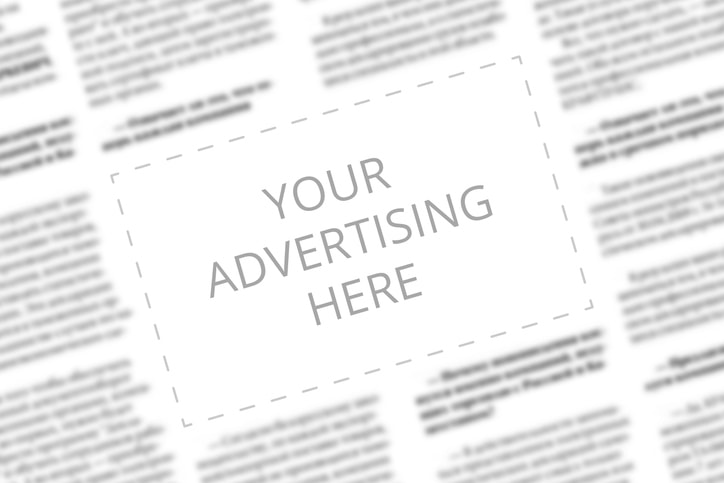
Print ads aren’t a terrible idea.
Magazine readership will likely increase over this time period. My family saves magazines to take with us on car trips, it’s good group entertainment in lovely bite-size sharable articles, like a blog printed in pretty, shiny paper. Seems like print ads aren’t a terrible idea right now. The nature of a print ad is a branding exercise, so keep that in mind as you design yours.
Don’t gamble on billboards.
I am afraid this is probably not where you need to invest your money at the moment. People are not going to be traveling very far, so fewer people will be seeing your billboards. I really feel bad for the people who invested in billboards for what may have been their first time this year, because their return on investment is not going to be what they were hoping it would be.
Event Marketing
Take Away: This is a total bust unless you can find a way to do it online.
I consider event marketing to include event sponsorships, public speaking, hosting events, and attending networking events — a very human-centric marketing revolving around making connections, generally face-to-face. While I’m usually overwhelmed and “conferenced” out by this time of year, I find myself missing it now. The grass and all, you know.
These events are pretty much out the window. Currently, you can’t legally even hold one. Here’s the deal, though, even without those face-to-face events, we have to maintain this human element — it’s more important now than ever. How can we find a way to still connect as people? How do we maintain all those relationships we foster each year at conferences and trade shows? Maybe we’ll find that answer as we go through this exercise. (That’s foreshadowing in case you missed it…keep reading. 😏)
What an administrative nightmare for all those event planners right now… refunding money, canceling reservations, fielding questions… basically working overtime to not get paid. I tip my cap to you for keeping it together and staying professional through all this.
Is there a way for us to keep some events by going online?
For example, while Facebook might not be the perfect platform for hosting a live event, doing so could yield some serious benefits:
- You could start a Facebook group and invite all the attendees. And when the event is over, you still have a Facebook Group with tons of people in it.
- Post about each one of your sponsors. You can even boost the post to give them more exposure.
- You could invite people who may not have normally been able to attend and build even more exposure for your event and its speakers than you ever could have before.
- It would be less expensive for participants. No travel, no hotel, no tourism dollars flowing into the town where you host it. Oh wait, I was supposed to be positive right now, Okay, how about waaaay less expensive for the event planners?
- You don’t have to feed people, or hear them complain about what you feed them, for that matter.
- And if you figure out how to do it, you could have a virtual and physical gathering next year! Serve more people than ever!
And that, my friends, was my attempt at making rainbows out of a totally craptastic situation. We’re going to have to challenge ourselves and find ways to take these opportunities online, because, I said it before and I’ll say it again, people are still going to want to connect. They actually NEED to connect more now than ever before because humans do not like to be locked in boxes.
Online Marketing
Take Away: Going online is your best bet.
Moving onto the semi-bright spot in all of this — online marketing. And I’m not just saying that because I do online marketing for a living. There is going to be a huge surge in online content. I’m pretty sure the internet is about the only place we can’t catch COVID-19.
The first metrics are out, and according to Forbes, internet hits in Europe for areas with enforced self-isolation policies are up 70% over pre-COVID internet usage. Data from Neilson shows as of March 27, overall internet usage in the US is up 28%. You have a captive (in some cases, literally) audience to share your message.
Online marketing encompasses all the digital marketing activities we house on the internet, anything from websites to podcasts or vlogs. But for now, I’m going to focus on the big 5: websites, blogs, social media, online ads, and email marketing.
Websites and blogs will see an increase in traffic.
Blog-style websites should definitely see an increase in traffic. People will be looking up all kinds of stuff. How do I fix up my house? How do I cook this meal? How do I do my hair? Well, maybe hair might be on the bottom of the list. My gut tells me cooking, health, news, anything crafty, DIY, home improvement — those websites will see an uptake in traffic.
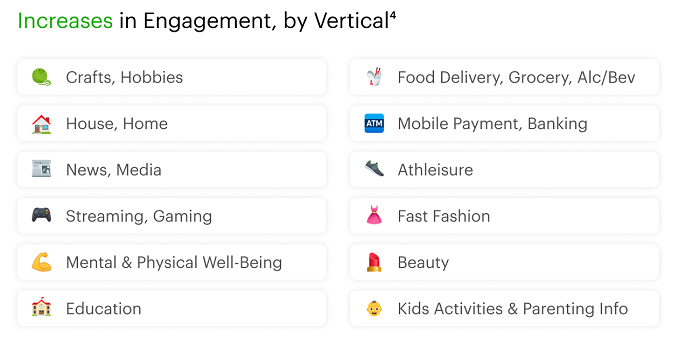
Data just in from Snapchat backs up my initial thoughts, revealing crafts, hobbies, house, home, news and media are showing an increase in engagement.
So, if you have a product or service that you feel like is well-positioned to this audience, you may consider placing online ads on other sites as traffic continues to rise.
All shopping sites — if you can ship, now’s the time to market. Focus on social media and the search network (more on these strategies here in a bit). I didn’t even think it was possible for Amazon to get bigger, yet they announced on March 16th, they’re opening up 100,000 new roles and paying people $2 per hour more than their normal $15/hr rate to cope with the up-sweep of business.
Just imagine what the people in the boardrooms over at Amazon are having discussions about right now. It’s all about toilet paper. How can we get more toilet paper? How can we ship it faster? Can we make toilet paper? Can we buy it in bulk and sell it ourselves under our brand name? Those folks are seeing dollar signs. I’m going to go buy Amazon stock.
Invest in your future: Do some website housekeeping and blogging.
Your website is the marketing gift that keeps giving…and taking. There have been a number of changes over the last few months from Google to which most websites have not yet adapted — cookie notifications, caching, and privacy policies to name a few. Because most websites were built before this was mandatory, you could use this opportunity to get those little things done — that way, Google won’t start penalizing you.
If you’ve got extra time on your hands, investing in your blog will pay off for years to come. People often create a website with the intent to blog, but after building the site, they’re so overwhelmed with the day-to-day, they never get around to it. If you’re short on work, have your employees write blog posts. You can always schedule them to publish in the future.
Blogging is just a great place to invest your energy. It can connect you with buyers at beginning of the buying cycle, which is where we need to focus now. And on the other side of this pandemic, all those blogs will still be out there gaining exposure and working for you. Like I said, it’s the marketing gift that keeps on giving.
The time for social media is now.
People are on social media. I’m afraid this is all anyone will be doing for the foreseeable future. Some will regret it, but they’ll be so bored they’ll do it anyway. People want to connect in any way they can right now, and that includes, nay, darn near encompasses all of social media. People are going to Twitter to get a handle on what’s going on in the world; they’re on Facebook to make sure the people they know are okay; Instagram and Pinterest allow them to escape (I’ve taken up shelter in these networks).
According to the New York Times, during the week of March 24, 2020, overall U.S. traffic from Facebook to other websites increased by more than 50% from the week before. More than 50%! That’s where I think you should focus your efforts right now.
Regardless of why people are there, the presence of all these users on the networks creates an opportunity for your business. To get started, if you haven’t already, and gain a following quickly, rekindle a relationship you’ve ignored for too long or get in front of even more people than you have before.
Social ads are a steal.
SocialBakers reports CPM for social media ads are down by almost half ($0.810 vs. $1.883 in Nov 2019). Cost-per-click is down by around 19%. Click-through rates, however, are also lower, declining by 17.2% since January 2020. The shift in these metrics varies from industry to industry. All my fun econ training tells me this makes total sense.
Talking about the laws of supply and demand gives me a feeling of satisfaction and control, so I shall break it down for you:
- The number of people advertising is down, so there’s an excess supply of ad space.
- Social media and internet traffic overall has increased, which also increases supply because there’s more opportunities for ads to show.
- The demand for ads is down because people are reducing their ad spend, thus less ads are running.
- Aaaand so the cost goes down.
Wasn’t that fun?! People aren’t clicking on items to buy because they’re not making buying decisions right now, thus reducing the click-through rate.
Here’s the deal though: That’s okay. They saw your ad. You got to run it for cheap, and it’s building the relationship. They still have the problem you can solve for them, and they will need to solve it eventually — just not today. Therefore, social ads remain an excellent way to brand your company and get in front of more people for less money than in recent history.
[cta_left id=”54″]
If you want to see “results” now, run like campaigns.
We’ve had excellent luck promoting posts and running ads with the goal of increasing page likes for our clients. We ran an experiment for one of our clients by placing two ads — not even the fancy moving-blinking ones, just a plain ol’ looks-like-a-post (because they were, we just copied them) ads — with a goal of getting more page likes. We spent $40 on the first one and got 126 likes and spent $15 on the 2nd one for 48 likes. Not bad, eh?
Why am I telling you this? The moral of the story is, while people are not necessarily buying things right now, they are ON social media and interacting. You can gain a relationship with them now and sell stuff to them later, which is really how social media is supposed to work anyway. So go get ’em!
Stay the course with your email marketing.
I will be really interested to see the data from all of our email marketing accounts throughout this period of time. I don’t know if it’s gonna go down or go up. My guess is it will stay consistent.
On one hand, people will be spending more time in their email because they can’t communicate face-to-face and therefore have to relay their important messages in another way. On the other hand, some people, like myself, are stuck at home with their kids and trying to work. And quite frankly, I’m spending a good deal of my time ignoring my email in an attempt to get ANYTHING done (like writing this blog post I’ve been chipping away at for 4, no, 6 days now).
My point? Stay consistent with your email marketing. It’s never a bad medium to jump into. The return on investment is so high because it costs little to nothing to compose and send emails. Again, if you already do email marketing, keep doing it. Even if you have to adjust the script because your business is currently closed, you can stay in touch with your customers and maintain your relationship via email.
Audience for display ads will be huge.
Okay, so remember how I advised you to focus on the beginning of the buying cycle? And that’s branding. Well, one way to brand your business online is with display ads. This is when you run ads for your company on other websites like the New York Times or streaming websites like YouTube or Hulu. Start running those ads. Keep running those ads. Target them in the physical locations in which you have the best potential for growth.
Conditions are primed for binge-watching. Funniest quote I read while writing this article is rampant on Twitter, “Your grandparents were called to war, you are being called to sit on the couch and watch Netflix. You can do this. #QuarantineLife”
Yup. Media streaming is going to be intense, so placing ads on sites like YouTube and Hulu is a no-brainer right now. It’s not that expensive to run ads on Hulu – around $30 for 1,000 views ($0.03 per view — tell me a TV station who offers that pricing), and sometimes YouTube can be so cheap it’s almost free.
With the surge of website traffic, I’m predicting you’ll have far more opportunities for your ads to show then you have previously. Plus, you’ll have a captive audience you may not have ever seen before. My Google Ads guy, Sean, and I both agree with the supply of ad space going up and the demand for ad space staying consistent, the cost for ads should either decrease or remain the same (Google makes its own rules after all). See? I’m putting my minor in Economics to work, right here on this blog.
Review the data before turning off your Google Search Ads.
A big chunk of online search budgets are spent on search ads. So the second people start to panic, their first response is to shut them off. Don’t. Hear me out before you think I’m crazy, my first reaction was to turn them off, too.
WordStream released a comprehensive review of 15,759 US-based WordStream client accounts to report Google Ads trends by industry on March 18th. And while it still could be just the early days, some industries are getting better performance than pre-COVID-19 from their search ads while others stay the same and still others are suffering.
Industries who are doing well will be no surprise:
- Non-Profits
- Heath & Medical
- Business
- Management
- Finance
- Beauty & Personal Care
- On-Demand Media
- Greetings, Gifts & Flowers
Some industries with mixed performance may dip further or swing back with time:
- Real Estate
- Automotive
- Retail Jobs
- Education
- Legal Services
- Home Improvement
- Home Furniture
Industries taking the biggest hit are also not surprising: travel and tourism, bars and restaurants, live entertainment, conferences and events, sports and fitness, construction and manufacturing.
So before you just pull the plug on your search ads, take a minute to assess your situation. Are your ads working? And, by that, I mean are they bringing in leads? As you can see by the WordStream report, every industry is different. You have to actually review your marketing data to make a decision. (I just said that in a complete and total critical parent tone, my apologies. If you do review your data, power on.)
If people aren’t calling you to buy, then they might not be searching for you, either, right now. In case you’ve forgotten, you only pay per click, so if people are not searching for what you offer, and they’re not clicking on your ads, you won’t pay for them. So your budget should be lowering itself naturally to reflect the number of leads that are coming into your company. It doesn’t make sense to turn these ads off because you still need business, and this is one way you can get it.
Don’t lower your daily budget either. You can’t predict when people will be searching. Ten people could need you one day and no one could need you the next. Not to mention, your ads will not run the same way they do now if you dramatically drop your budget.
Back to economics: if you’re considering turning off your search ads, it’s a pretty good bet your competition is considering it, too.
Back to supply and demand: if no one else is running search ads, they’re relying on their SEO for leads. You can claim an ad slot for cheap if no one else is bidding for it. Just having Amazon cut back on spending for their Google Ads lowered the cost per click for retail establishments across the board by 9% according to WordStream.
If you have leads coming in, keep your Google Ads rolling as long as you can. And if not, well, as much as I hate to say it, you know what to do.
Don’t stop now — keep building your karma.
It’s so easy to feel the urgency of everything right now. It’s not a time for you to completely hunker down and turn everything off. Hopefully, the perspective I’ve offered today can allow you to take a few steps back and look at the big picture of your marketing. Find the opportunities available using online marketing, and stay the course with your print and TV. Think outside the box with event marketing. And keep focusing on the early stages of your buying cycle throughout you messaging to stay the course and build karma to cash in later.
Who Manifested This Madness?

This fabulous human, that's who.
Monica Maye Pitts
Monica is the creative force and founder of MayeCreate. She has a Bachelor of Science in Agriculture with an emphasis in Economics, Education and Plant Science from the University of Missouri. Monica possesses a rare combination of design savvy and technological know-how. Her clients know this quite well. Her passion for making friends and helping businesses grow gives her the skills she needs to make sure that each client, or friend, gets the attention and service he or she deserves.

